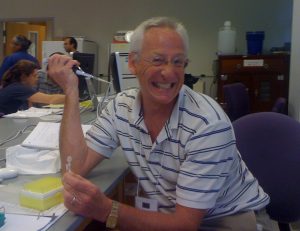By Kevin McEligot ’11
ST. LEONARD, MD–This summer I have been participating in an internship with Morgan State University’s Estuarine Research Center. The research I have been working on involves looking at the effects of Polycyclic Aromatic Hydrocarbons and their affects on fetilization success and embryonic transformation to D-Stage larvae in the Eastern Oyster (Crassostrea virginica). Essentially we have to extract eggs and sperm from oysters by stripping them down, analyzing their gamete viability, and then fertilizing the two in various enviroments of PAHs to observe the abnormalities that are produced by the concentrations of PAHs. We have been using a lot of techniques that I have picked up in school, especially the flourescent microscopy that we used in Endocrinology with Dr. Devlin. So far it appears that our experiments are producing signifigant results that are similar to what we hypothesized. The other positives about working at the Estuarine Research Center is that I have been able to look at and help with other experiments here including; oyster hatchery operations, on going crab studies ranging back to the 1960s, and phytoplankton sampling. This internship is also teaching my valuable life skills, I can now easily and properly shuck oysters after doing it so many times here.









